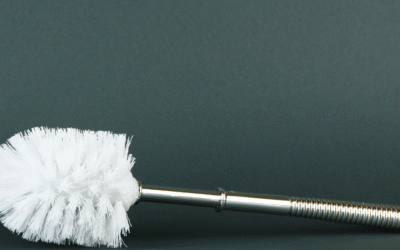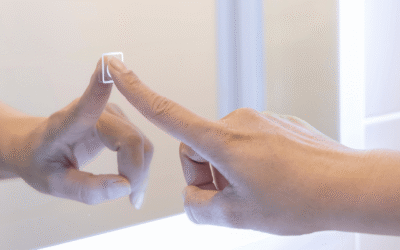Caring for a pet snail might seem simple, but providing the right nutrition is crucial for their health and growth. Snails thrive on a diet of organic fruits and vegetables, which offer essential nutrients without harmful chemicals. However, not all produce is snail-friendly. High salt content and starchy foods can be detrimental, leading to dehydration and digestive issues.
A balanced diet is key. Snails need a consistent source of calcium, such as cuttlebone, to maintain their shell health. While kale and spinach are nutritious, their high oxalate content can interfere with calcium absorption, so they should be offered sparingly. It’s also important to avoid acidic fruits like tomatoes unless balanced with other food options.
In essence, the best snail food combines variety with nutritional value, ensuring snails remain healthy and vibrant. With the right choices, snail owners can enjoy watching their pets flourish in a safe and nourishing environment.
Top Amazon Sellers
Key Takeaways
- Essential Nutrients: Ensure snails receive a balanced diet rich in calcium and protein for healthy shell development and growth.
- Calcium Sources: Provide cuttlebone or crushed eggshells separately to maintain shell strength and prevent health issues.
- Protein and Safe Foods: Include a variety of organic vegetables, fruits, and herbs such as carrots, apples, and mint to meet protein needs and ensure balanced nutrition.
- Foods to Avoid: Steer clear of high-salt, starchy, or acidic foods, and avoid bread, grains, dairy, and raw pasta to prevent health complications.
- Preparation Tips: Rinse produce thoroughly, slice into small pieces, and ensure hydration with a shallow dish of chlorine-free water. Use calcium supplements cautiously and introduce new foods gradually.
Essential Nutrients for Snails
Every snail’s diet must include calcium and protein to ensure healthy shell development and overall growth. A variety of sources can provide these essential nutrients in balance.
Calcium Sources
Calcium is crucial for maintaining a strong shell. Cuttlebone offers the best option due to its high availability in pet stores, specifically in the bird section. Alternatively, crushed hen eggshells can serve as a temporary solution. To avoid harmful conditions akin to kidney stones, provide calcium separately rather than mixing it in food. Snails also absorb calcium naturally from fruits and vegetables in moderation.
Protein Sources
Protein supports snail growth and repair. Fresh leafy greens like lettuce and spinach, in small amounts due to oxalates, can supplement protein needs. Flowers such as marigold or dandelion also offer beneficial protein content. For balanced nutrition, snails should access a wide array of greens and naturally protein-rich plants. Reject starchy foods as they can cause digestive issues.
Recommended Safe Foods
A balanced and nutritious diet is crucial for snails. Organic vegetables and fruits are beneficial choices, with options such as carrot, pumpkin, and spinach providing essential nutrients. Safe fruits include apple, pear, and banana. Herbs like coriander, basil, and mint are suitable, while mushrooms should only come from trusted sources. Cooked oats and small amounts of unseasoned raw meat add variety. Wet cat or dog food, examined for low sodium and organic ingredients, is an option. When considering outdoor plants, ensure they’re free from pesticides with choices like broadleaf plantain and dandelion. Algae wafers offer a reliable backup. Consistency helps in avoiding digestive issues, maintaining the best snail food standards for optimal health.
Foods to Avoid
Certain foods negatively impact snail health. High-salt items cause dehydration, leading to severe health issues. Fresh or processed foods containing preservatives pose risks as they affect digestion. Bread and grains offer little nutritional value and should be avoided. Foods high in oxalate, such as spinach, hinder calcium absorption crucial for shell development. Acidic foods, while sometimes used, disrupt pH balance if unmoderated. Dairy products aren’t suitable as snails cannot digest their lactose content, causing gastrointestinal issues. Raw pasta and rice also present risks due to their expanding nature when wet. Ensuring snails avoid these foods contributes to their health, complementing the best snail food diet, aiding in maintaining optimal growth and wellness.
Preparing Snail Food
Ensure organic fruit and vegetables are available; snails thrive on natural produce. Rinse thoroughly to remove potential chemical residues. Slice food into manageable pieces for easy consumption. Include spinach or kale sparingly due to oxalates that impede calcium absorption.
Maintain moisture by offering a shallow dish of chlorine-free water for hydration. Supplement with calcium using cuttlebone or eggshells. Keep the calcium source separate to prevent overconsumption, which could lead to health issues.
Explore edible flowers and untreated leafy greens for variety. Introduce new items like herbs gradually to monitor reactions. Limit acidic foods to occasional treats, ensuring they’re balanced with neutral options. Give a reliable backup such as algae wafers in times of scarcity. Providing diverse, organic choices constitutes the best snail food regimen.
Conclusion and Top Picks
Ensuring pet snails receive a balanced and varied diet is crucial for their health and well-being. By providing organic fruits and vegetables, along with essential nutrients like calcium and protein, snail owners can support their pets’ growth and shell development. It’s important to avoid harmful foods that can lead to dehydration or digestive issues. Incorporating safe herbs and edible flowers adds variety, while consistent dietary practices help maintain optimal health. With careful attention to their nutritional needs, snails can thrive in their environment.
Frequently Asked Questions
What should I feed my pet snail for optimal nutrition?
A balanced diet of organic fruits and vegetables is ideal. Offer safe options like carrots, pumpkins, apples, pears, and bananas. Herbs such as coriander, basil, and mint are also beneficial. Ensure a consistent source of calcium, like cuttlebone, to support shell health. Occasionally, include cooked oats, unseasoned raw meat, and pesticide-free outdoor plants like dandelion. Avoid high-salt and starchy foods.
Why is calcium important for snails?
Calcium is vital for snail shell development and overall growth. It helps maintain shell strength and structure, preventing deformities. Providing a steady calcium source like cuttlebone supports healthy shell production. It’s important to offer calcium separately from other foods to avoid overconsumption, which could lead to kidney stone-like issues.
Are acidic foods safe for snails?
Acidic foods should be limited as they can disrupt a snail’s pH balance. While they can be offered as occasional treats, ensure they are balanced with neutral foods to prevent digestive issues. Overconsumption of acidic foods can lead to health problems for snails.
What foods should I avoid feeding my snail?
Avoid high-salt foods as they cause dehydration. Steer clear of bread, grains, and foods high in oxalates like spinach, which impede calcium absorption. Acidic foods, dairy products, and raw rice or pasta should also be avoided, as they can lead to digestive and health issues.
How can I ensure the safety of outdoor plants for snails?
Always ensure outdoor plants are pesticide-free before feeding. Broadleaf plantain and dandelion are generally safe options. If foraging, wash the plants thoroughly to remove any potential residues. This minimises the risk of pesticide exposure, ensuring safe consumption for snails.
Can snails eat meat, and if so, how should it be prepared?
Snails can consume small amounts of unseasoned raw meat as part of a varied diet. Ensure the meat is fresh and organic. Introduce meat sparingly to avoid digestive issues, and observe any reactions your snail might have. Wet cat or dog food, low in sodium, can also be offered occasionally as a protein source.
How do I prepare food for my snail?
Rinse organic fruits and vegetables thoroughly to remove chemical residues. Slice them into manageable pieces. Provide calcium sources like cuttlebone separately. Introduce variety with edible flowers and untreated leafy greens, monitoring reactions. Keep a shallow dish of chlorine-free water nearby to maintain moisture.












